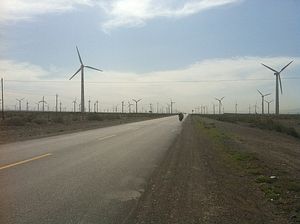Ever since the introduction of China’s Belt and Road Initiative (BRI) in 2013, there have been concerns over its potential impact on climate change. Cardinal attention has been paid to China’s participation in coal power plant projects. Reportedly, China had been involved in 240 such projects in 25 BRI countries by the end of 2016, including 106 projects either in the planning or construction stage at that time.
There are good reasons to be preoccupied with these coal power projects. After all, coal consumption is the single greatest cause of global warming. And it is notable that six of the ten most vulnerable countries to climate change are potentially in the BRI’s ambit, an indication that the BRI countries are extremely sensitive to climate-related activities. Furthermore, there has been an emerging consensus, at least in some developed countries, on reducing the use of coal and boosting the expansion of clean energy, particularly after the Paris agreement was finalized in 2015.
However, disturbing as these coal power projects are, most of them were actually launched before 2013, when the BRI was proposed. Furthermore, China’s involvement principally took place in the form of market-driven project contracting (126 projects), which indicates the limited role of Chinese stakeholders in project decision-making. Moreover, the idea of eliminating coal power plants is not without controversy: while some developed countries have pledged to phase them out, they remain the cheapest means of meeting the surging energy needs in developing countries. For power consumers in the developing world, coal is far from something to get rid of.
It would be unfair to not take China’s soaring clean energy investments into consideration when assessing the impacts of the BRI on climate change. China is now leading the world in domestic clean energy investment. Despite the decrease in 2016, it still took the crown asthe number one clean energy investor with $78.3 billion. China’s massive investments have given birth to a number of monstrous clean energy product suppliers. In 2016, China dominated the solar-module industry with eight of the world’s ten largest firms, and the wind-turbine manufacturing with five of the top ten makers.
Today, as Chinese clean energy firms are competing for domestic market share, they are also increasingly going global. In the past several years, developing counties to the south and west of China have become a key destination for Chinese investments. In 2015 and 2016, seven of China’s 19 overseas clean energy investments were recorded in BRI countries from Egypt to Vietnam, with a total value of $11.8 billion.
In addition to clean energy investments, the added infrastructure finance that is attributed to the BRI can also generate favorable outcomes. Infrastructure construction is at the center of climate change adaptation efforts. The developing countries included in the BRI have huge infrastructure demands as their economies have been growing rapidly. According to the Asian Development Bank, the infrastructure demand of Asian developing counties is about $1.7 trillion per year.
Take the energy sector as an example. It is estimated that Asia’s developing countries, mainly those in South and Southeast Asia, will account for two-thirds of global energy consumption growth in the next 20 years.
The BRI focuses on infrastructure construction, and two institutions have been established for financial support: the Asian Infrastructure Investment Bank (AIIB) and Silk Road Fund. Both have dedicated resources to support infrastructure construction across BRI countries — in line with their commitments to backing the fight against global warming. Since its opening in early 2016, the AIIB has financed 24 infrastructure projects, including seven clean energy projects that are worth of $1 billion in total. Meanwhile, the Silk Road Fund had spent around $7 billion on 17 infrastructure projects by the end of 2017.
A less visible, but not less remarkable, potential achievement for the BRI is in fostering so-called South-South climate change cooperation. China has been an active practitioner in this area with its increasingly generous contributions of climate assistance. Now, policymakers at Beijing have recognized the climate change diplomacy value of the BRI, and are attempting to build a connection between China’s implicit climate change leadership in the global south and the mammoth initiative.
In sum, as the BRI is a massive undertaking, its impact on climate change is complex. China is well aware that a climate-unfriendly BRI is a loss it cannot afford, which is why Chinese leaders have vowed to “green” the project. It is worth expecting that the BRI will contribute, rather than undermine, the global efforts to tackle climate change. However, to this end, China still has a lot to do.
Zhang Chao is a Ph.D. at Pompeu Fabra University, Barcelona, Spain. His research focuses on China’s energy and climate change policies.

































